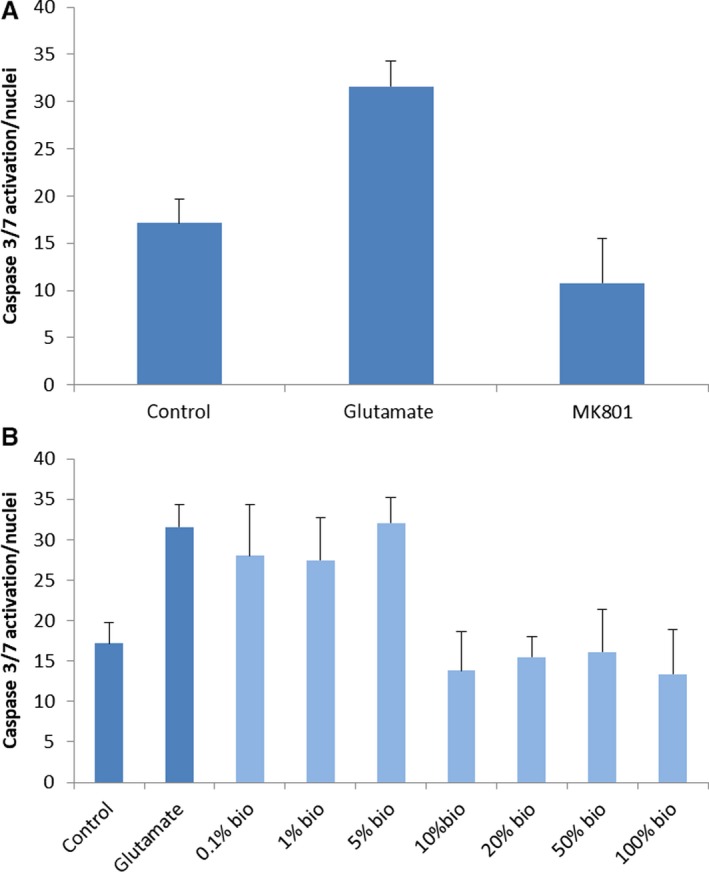Figure 5.

(A) Validation of caspace 3/7 activity in control conditions, glutamate exposure, and the antagonism of glutamate by MK801. This study validated that glutamate induces an increase in caspase 3/7 activity in cortical neurons and that MK801, a glutamatergic NMDA receptor antagonist, blocked the effects of glutamate on the induction of caspase 3/7 activity. (B) Caspase 3/7 activity in primary cortical neurons exposed to glutamate in combination with the S2RM collective secretome. The control shows the baseline level of caspase activity without exposure to glutamate or the S2Rm. The glutamate bar is for exposure to glutamate without S2RM. The bio bars indicate exposure to glutamate plus the addition of the various percentages of the S4RM‐N secretome at concentrations from 0.1% to 100%. Each condition was run in triplicate. These data show that concentrations of the S2RM collective secretome at 10% and higher significantly reduced the induction of caspase 3/7 activity in cortical neurons.
